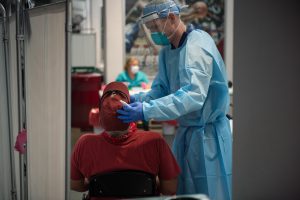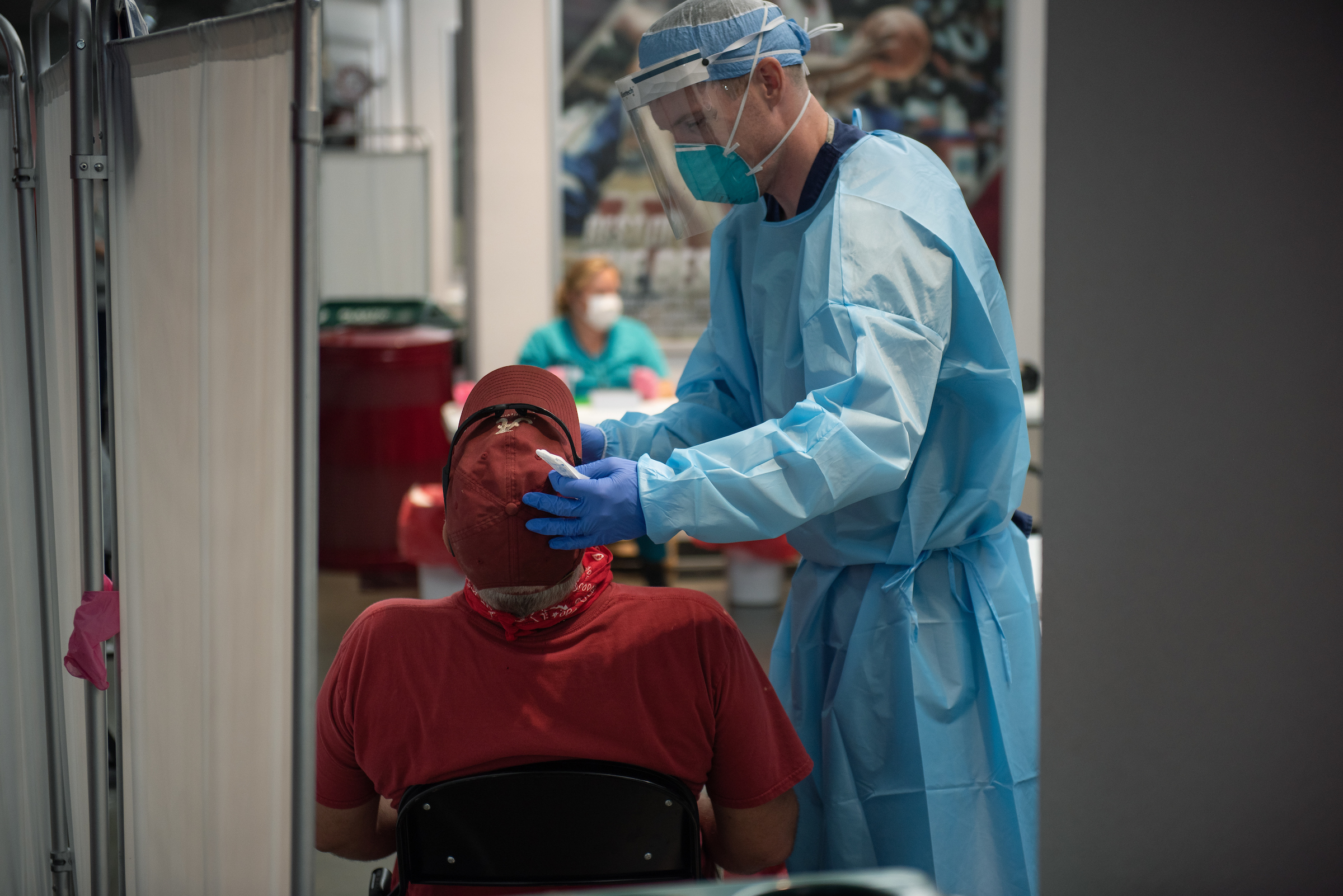
As the fall semester continues, the testing plan at The University of Alabama is helping keep campus open and students, faculty and staff safe.
“We have accessible, convenient testing that is available every day,” said Dr. Richard Friend, dean of UA’s College of Community Health Sciences. “This is one of the most robust testing programs in the country. The University is leading the way not just in having students back on campus, but also in keeping them safe.”
Friend implores students and employees to get tested on campus, instead of with an off-campus health care provider, so the information on positive tests can be used confidentially to alert others of possible exposure. If testing is done off campus, students, faculty and staff must report positives results to the UA COVID Support Program at 205-348-CV19 (2819), or testing@guidesafe.org.
“We make every effort to ensure all students can get a test, even if they don’t have health insurance,” said Friend, who is coordinating UA’s testing program with the UA System Health and Safety Task Force. “If a test is done off campus, we have no way of knowing if it was done or the results unless the person who was tested reports it to us. On-campus tests are automatically entered into the system so we can begin exposure notification and quarantine and isolation procedures.”
Consistent with the UA System Comprehensive Health and Safety Plan, testing at UA is done in four populations: symptomatic individuals, individuals possibly exposed, individuals in a shared geographic area, and those randomly selected individuals for sentinel testing.
Testing for students experiencing symptoms or possibly exposed to COVID is available Monday through Friday from 8 a.m. to 5 p.m. at Coleman Coliseum, and 11 a.m. to 4 p.m. Saturday and Sunday at the Student Health Center.
Students who need to see a doctor are encouraged to go to the Student Health Center even if they have not yet been tested. Employees who need to be tested should go to the University Medical Center.
Those who think they have been exposed to the coronavirus should reach out to the UA COVID Support Program for guidance. UA’s COVID Support Program is available to assist students, faculty and staff through the process.
Sentinel testing, which starts next week, is done to predict how the virus is behaving within the campus community, Friend said. A random sample of 4-5% of the campus community is selected to participate in the test. Sentinel testing is required for students who live on campus, participate in club sports, are members of a student organization holding meetings with more than 10 people, or are participating in clinical activities during the semester, provided the student also has or will have a presence on campus. Those who refuse to participate in for-cause testing will be referred to the Office of Student Conduct.
Students required to participate in sentinel testing must also participate in for-cause testing. For-cause testing is done when campus health officials determine the need based on a notable increase in reported positive tests or COVID-19-related symptoms in a common geographic area or group of people such as a floor of a residence hall, a Greek house, student group or a class.
“Wherever we have documented cases, we do geographic testing,” Friend said. “We want to see if there is something going on within that particular community that we can help by intervening to keep the virus from spreading further. It is not singling any one group out, but another measure to keep the campus community safe.
“Our testing has performed very well and allowed us to take swift action to slow the spread of COVID-19,” Friend said. “We are heading in the right direction, but everyone needs to be patient and work together.
“It is important to remember that we are in unprecedented times, and the University is committed to keeping everyone on campus and throughout the community safe. I am very proud of our students, faculty and staff for helping us comply with the mitigation efforts we know will work,” Friend said. “Proper face coverings, social distancing and frequent sanitizing are proven preventive measures while testing, tracing, isolation and quarantine are the tools we have to mitigate spread across campus. These are all effective strategies as we move forward together.”
